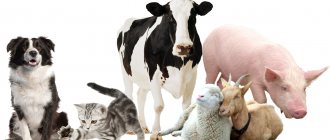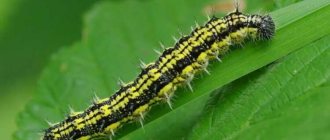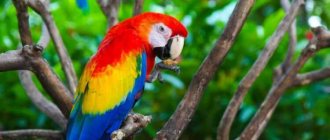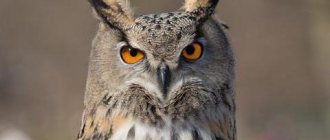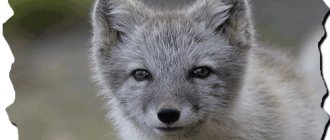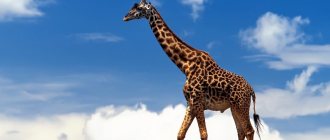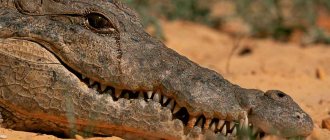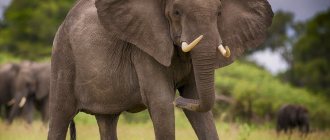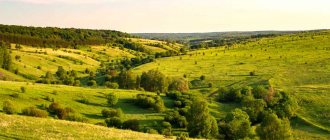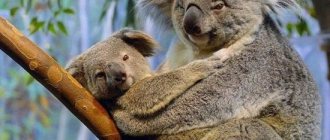Insectivores are the oldest and most interesting group of the animal world that have settled everywhere.
They are not found only in Antarctica, Australia and in some areas of South America and where marsupials are not found.
The first representatives of insectivores lived at the same time as dinosaurs, 140 million years ago.
↑ Insectivores: examples
The food of insectivorous animals is insects, arachnids, worms. This is the diet:
- in birds: woodpeckers, swifts, swallows and other representatives;
- in amphibians: toads, chameleons, newts, salamanders and frogs, in fish;
- in reptiles - this is how lizards feed;
- in the armadillo, monkeys and numbats, sloths and insects: dragonflies, spiders, ladybugs and others.
↑ Order insectivores: description
Insectivores are the order of mammals, which is included in the subclass of animals and the superorder of Laurasiatheria. The order consists of 4 families:
- Slittoothed.
- Moles.
- Hedgehogs.
- Shrews.
Many families have already died out. Insectivores hunt alone at night and at dusk, underground, above or under water. These animals are constantly looking for food. A primitive animal that has not changed over time is the hedgehog. Shrews and moles, in ancient times, were like hedgehogs, but they changed to live in new conditions. The mole adapted to dig the ground and became blind, living in the dark. Neither one nor the other needed thorns.
Characteristics of the hedgehog family
The order contains a large number of insectivorous animals. The most common are common and long-eared hedgehogs. Each of these species has 5 varieties. The animals are distinguished by medium shapes. The body length of an ordinary hedgehog ranges from 13 to 27 cm. The entire back is covered with thin but sharp spines, which are also found on the sides of the animal. Long and sparse hair grows between the needles. There are no needles on the hedgehog's abdomen - it is completely covered with coarse hairs.
The head of hedgehogs is oblong, slightly wedge-shaped. The muzzle is elongated and has a thin, movable nose that resembles a trunk. The color of hedgehogs is always gray or brown, with black or brown spots. Nature ordered that these animals blend in color with the earth as much as possible. This makes it easier for them to move around and collect food without being seen by predators.
↑ Number of insectivorous animals
The 2005 reference book Species of Mammals of the World states that the order consists of 54 extant genera:
- 1 genus and 4 species;
- moles - 15 genera and 39 species;
- hedgehogs 10 genera and 24 species;
- shrews 26 genera and 376 species.
mole photo
There are 3 families of these animals in Russia, which include 10 genera with 43 species.
↑ Types of insectivores
- Representatives of Moles have a body length of 5-20 cm, weigh 19-175 g, and have 33-44 teeth. They are burrowing animals, so their front legs look like jagged shovels. Shrew moles do not dig holes - they live at the top. Habitats of moles: Eurasia and North America.
- The subfamily of muskrats also belongs to the mole family. These are rare, endangered relict species, included in the Red Book. Muskrats settle in river floodplains. The animals are 17-23 cm long, tail 20 cm, weight - 520-540 g. The family home is a hole with an entrance under water.
- The subfamilies of True Hedgehogs and Rat Hedgehogs (hymnurs), the Hedgehog family, include: the common (European) and long-eared hedgehog, South African, Indian, dark-spined, collared and other species. The length of hedgehogs is 10-45 cm. Large hedgehogs live 4-7 years and 2-4 years for small animals.
- The family of shrews includes: - shrews, live in the forest zone; — shrews, in Russia they are found in the south; - cutters like the forest area; - and the putorakas - the Caspian sands.
Moles
The mole is also a prime example of an insectivorous animal. These representatives of mammals have many of the characteristic features of this class, but there are also distinctive features. The skin of moles, unlike the hedgehogs discussed above, is presented in the form of short dark hair. The front paws of these animals have a rather specific appearance for insectivores - they are enlarged, they have long claws, as they are designed for convenient digging of the ground. Moles live in the ground, where they make burrows with numerous nests and tunnels. Here it is convenient for them to find food in the form of earthworms, larvae of various insects, etc. Another distinctive feature of the mole is its underdeveloped eyes - since it lives underground, it practically does not need them; The main sensory organ is the nose.
↑ Features of the order insectivores
Insectivores have been preserved with primitive structural features like ancient animals: small body size, with a simple structure of teeth and limbs.
- A movable muzzle elongated with a proboscis.
- The paws have 5 toes with claws.
- The fur is short, and hedgehogs have needles instead of fur.
- Color brown, brown, gray, white or ocher
- There are no convolutions in a small brain.
- The sizes of cone-shaped, poorly differentiated teeth are small.
- With developed hearing and sense of smell, but vision is poor.
- With an increased metabolic rate, constant food consumption is required.
- Prolific, families of animals are often replenished with 1-20 cubs.
General information
Sizes range from 3.5 cm for the pygmy shrew (Suncus etruscus) to 44 cm for the common gymnura (Echinosorex gymnura). The head is elongated, often ending in a very mobile nose. Vision is often weak and undeveloped or absent (in some moles the eyes are even covered with skin), but due to this, the sense of smell and touch is well developed. The jaws and chewing muscles are also well developed. The body is covered with short fur or spines. The skin glands are usually well developed. They are considered the most primitive order of placental mammals, existing at least since the Eocene.
The pygmy shrew, the world's smallest mammal by weight
↑ Insectivorous mammals
Insectivorous animals include primitive placental mammals, the chordate type. Their embryos develop in the resulting placenta. More often they are omnivores that eat small vertebrates (insects) and parts of plants.
Hedgehogs and shrews are land dwellers, otter shrews and muskrats like the aquatic environment, moles and golden moles like to live in burrows. Hedgehogs sleep in winter, buried in old leaves and grass. Tenrecs with spines like hedgehogs are of interest. They are characterized by low body temperature.
gaptooth photo
Snaptooths are similar to shrews, but larger. These are poisonous mammals. African insectivores are jumpers, similar to jerboas.
Systematic position
In older classifications, the order Insectivora includes a much larger range of extant and extinct animals than it does now. In the 1980s, a large number of genera were excluded from its boundaries, and the "remnant" order was sometimes called Lypotyphla. Continued research led to the exclusion of golden moles (Chrysochloridae) and tenrecs (Tenrecidae) into a separate order of Afrosoricidae. In recent years it has been suggested that the remnant order discussed in this article, sometimes called Eulypotyphla, is also paraphyletic and from it should be separated the family Erinaceidae and possibly the family Soricidae.
Striped tenrec
↑ Insectivorous birds
Birds' main food when they hatch and feed their chicks is insects, and most often pests. The number of birds is used to judge the number of insects that have bred: this number is proportional. The birds do not completely clean the garden and forest, but they keep them under control.
tit photo
Some birds have beaks equipped with hairs, like whiskers, with the help of which they recognize the trembling of an insect. The base of the beak is widened. During daylight hours, a pair of redstarts destroys 7-8 thousand insects and larvae, making 250 flights. In winter, tits feed on pupae and eggs laid by insects.
↑ Insectivorous predators
The order Carnivora belongs to the class Mammals. Carnivores are carnivores that feed on other living animals or carrion. Therefore, animals, birds, fish, amphibians and insects are called predators. There are many predators that diversify the menu with insects.
mongoose photo
The diet of mongooses, big-eared foxes, bears, aardwolves, sloth fish and crocodile also includes insects. The domestic cat is also a predator, catching mice, flies, and other insects.
↑ Carnivorous insects
Insects that feed on other insects are also called predators. Differences between insect predators:
- they eat insects and worms, and some even small vertebrates;
- adults and larvae are fleet-footed or fly to find food;
- Predation manifests itself in both larvae and adult representatives: some chew the prey, others suck it out, and others wait and ambush.
ladybug photo
These insects do not pose a danger to humans, and some are even liked. Such insects include ladybug, ground beetle, lacewing, dragonfly and other insects.
↑ Nocturnal insectivorous birds and animals
Nocturnal animals that hunt at night have sensitive hearing and a keen sense of smell, and their eyes are adapted to see in the dark. What makes these animals nocturnal?
- It's not as hot at night as during the day.
- Competition for food decreases.
- Luck in hunting increases.
- The danger from predators is reduced.
Night hunters include the nightjar, eagle owl and owl, the omnivorous raccoon and the red-eyed tree frog. Also hedgehogs, lemurs, bats and other animals.
Lifestyle and nutrition
They lead a terrestrial (hedgehogs), underground (moles), amphibious (shrubs) and very rarely arboreal lifestyle. They often dig holes or build nests for shelter while they sleep. The order is characterized by the fact that some species enter diapause under unfavorable climatic conditions (for example, a hedgehog hibernates). They are usually nocturnal. They feed mainly on insects, millipedes, worms and other small invertebrates, as is evident from the name of the order.
Small cutter
↑ Interesting facts about insectivorous animals
- Hedgehogs age like people, and their teeth also fall out.
- The shrew and dragonfly eat so much food per day, the weight of which exceeds their own weight.
- The mole does not have ears, and the entrance to the ear cavity is closed by a thin fold of skin.
- Only cuckoos feed on hairy caterpillars.
- Hedgehogs do not smell a new smell, but lick it, remembering the taste of the object.
- Hedgehogs do not eat apples, but disinfect their needles with the juice of the fruit.
- Hedgehogs in hot places have enlarged ears that help regulate body temperature.
- The location of the pile on a mole coat is straight, without slope, so the mole easily moves both forward and backward.
Hedgehog family Erinaceidae
Hedgehogs are the most ancient and primitive family of the order. People have known them for a very long time; even in ancient times, combs for sheep wool were made from dried hedgehog skins stretched onto planks. As a result, hedgehogs became so scarce that the Senate of Ancient Rome even issued a decree on their protection. Science knows at least 30 species of hedgehogs, and it turns out that not all of them are similar to the familiar prickly inhabitant of forests and parks. There are also completely different, primitive hedgehogs in nature, covered with hair, not needles, and resembling rodents in their appearance. And yet, the most famous feature of hedgehogs is their ability to curl up into a ball when in danger, exposing their prickly back to a potential enemy and hiding their unprotected muzzle and abdomen. (And the hedgehog has a lot of needles - 6-7 thousand!) Interestingly, some hedgehogs enhance the effect of their spines by lubricating them with a poisonous liquid. To do this, they catch toads, bite through their parotid glands and lubricate them with needle secretions. When injected with such “poisoned arrows,” a strong burning sensation occurs that does not go away for several hours.
Hedgehogs have very sensitive hearing and an excellent sense of smell, allowing them to sense prey several meters underground. But their vision is weak, but it is not so important for a nocturnal animal. In winter, hedgehogs sleep in a den made of grass, leaves and moss. During this period, their body temperature drops to 2-3 degrees, and their breathing rate drops to 6-8 times per minute. All winter they eat nothing and live off the fat reserves accumulated since the fall: before hibernation, hedgehogs weigh 700-950 g, in the spring no more than 350 g. For the offspring of a hedgehog, he also builds a special den, where he gives birth to 5-6 (sometimes from 3 to 10) hedge. Newborns are blind, deaf and hairless, but after a few hours they develop soft white needles. They grow very quickly, darken, and within two weeks they become the same as those of adults. Hedgehogs feed mainly on various invertebrates (spiders, slugs, worms, insects), but they do not refuse mice, frogs and chicks. They also eat berries, fruits and plant seeds. The hedgehog eats a lot and during the night eats as much as it weighs.
For some reason, there are many legends about hedgehogs - for example, that they are excellent snake catchers (no worse than mongooses) or that they carry apples on needles. In fact, hedgehogs do not specifically hunt down snakes, although indeed, on occasion, they can deal with a large viper. But their resistance to various poisons is truly amazing. Thus, compared to a guinea pig of the same size, hedgehogs tolerate doses of venom from snakes or wasps that are 35-40 times greater. As for apples on needles, perhaps this legend is not without foundation. The fact is that hedgehogs suffer greatly from numerous parasites that settle between their needles (lice, fleas, ticks, etc.). To get rid of them, they use strong-smelling substances, ride on carrion, “bathe” in anthills and even string them on needles butts. Perhaps the sour juice of apples planted on needles is also suitable for the same purpose.
